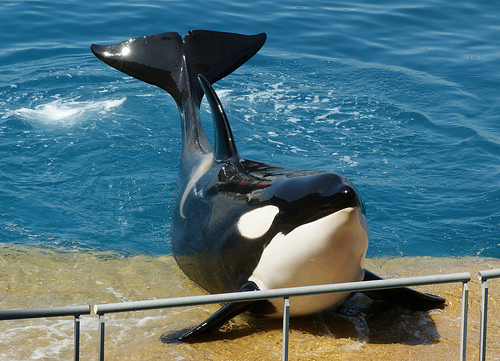Orcas are beautiful, cheeky whales dolphins.
- Orcas are mammals found in large ocean bodies that are from the Odontoceti suborder known as ‘toothed whales’, that also includes dolphins, sperm whales and other similar families and species that have teeth.
- Orcas are also known as ‘killer whales’, ‘orca whales’ and ‘blackfish’, and are often misunderstood to be ferocious killers, but, in reality they rarely attack humans, although some of those kept in captivity have caused human fatalities.
- Orcas have the scientific name Orcinus orca, and are from the family Delphinidae, the family of oceanic dolphins, and are therefore technically dolphins, even though they are referred to as whales.
- Orcas were first documented scientifically in the mid 1500s, by Swiss naturalist Conrad Gessner, in the book called Fischbuch (Fish Book), after he analysed a dead killer whale.
- There are ‘resident’, ‘transient’ and ‘offshore’ orcas, that are all slightly different in appearance, diet and behaviour, and the ‘residents’ are found near shore and tend not to roam; ‘transients’ tend to stay near the coast but move significant distances along it; and the ‘offshores’ travel long distances away from the coast.
Orca
Image courtesy of Spencer Wright/Flickr
- Orcas are coloured mainly black, with white patches, and can grow to be 5 to 9.8 metres (16 to 32 feet) in length, and weigh as much as 3 to 10 tonnes (3.3 to 11 tons).
- Each orca has a unique saddle patch design (the area around the dorsal fin) and a triangular dorsal fin, and the male’s is larger than the female, and can be as tall as 1.8 metres (5.9 feet).
- Orcas have developed eyesight; an amazing echolocation system; and they vocalise with clicking sounds, whistles and pulses; and when underwater, their heart beats 30 beats per minute, while at the water surface, the heart beats 60 beats per minute.
- Orcas live in ‘pods’ which are family groups, and have a typical lifespan ranging from 50 to 80 years in the wild, and up to 25 years in captivity, and the females give birth to a calf, on average, once every five years.
- An orca’s diet varies among different groups, which can consist of 30 fish species, some whales and 32 aquatic mammal species, including seals, dolphins and porpoises, and they can consume 227 kilograms (500 pounds) of food per day.
Bibliography:
Killer Whale, 2014, Wikipedia, http://en.wikipedia.org/wiki/Killer_whale
Killer Whale (Orca), 2014, National Geographic, http://animals.nationalgeographic.com.au/animals/mammals/killer-whale/






